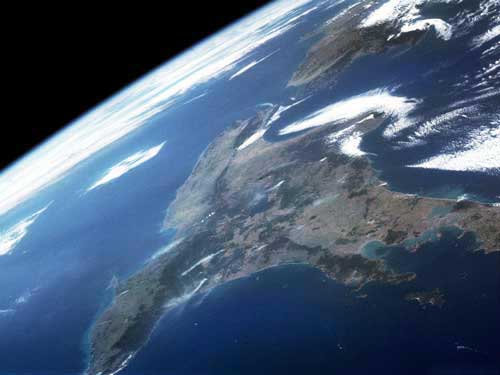A fundamental building block of biology has been discovered in wisps of stardust from the tail of a comet, offering fresh evidence that life on Earth could have begun from matter that arrived on our planet from space.
Analysis of tiny particles captured by the Stardust comet-chasing probe has revealed for the first time the presence of traces of an amino acid called glycine, a basic component of proteins without which life as we know it could not exist.
The discovery by NASA scientists supports a theory that the raw material from which life began formed in space and was carried to Earth by comets that crashed into the planet.
It also means other planets are likely to have been seeded with amino acids from comets in a similar fashion, suggesting extraterrestrial life may have evolved elsewhere in the universe and could even be common.
“Glycine is an amino acid used by living organisms to make proteins, and this is the first time an amino acid has been found in a comet,” said research leader Jamie Elsila, of NASA’s Goddard Space Flight Centre in Maryland.
“Our discovery supports the theory that some of life’s ingredients formed in space and were delivered to Earth long ago by meteorite and comet impacts.”
NASA Astrobiology Institute director Carl Pilcher said: “The discovery of glycine in a comet supports the idea that the fundamental building blocks of life are prevalent in space, and strengthens the argument that life in the universe may be common rather than rare.”
The discovery is the latest to come from NASA’s Stardust mission, which flew through the cloud of dust and debris trailing the Wild 2 comet on January 2, 2004.

Millions of tiny particles from the comet’s tail were captured by a grid filled with aerogel, a super-light, sponge-like material sometimes nicknamed “frozen smoke” because 99 per cent of its volume is empty space.
A capsule containing the collection grid detached from the spacecraft soon after its close encounter with Wild 2, and returned to Earth, where it parachuted to the surface on January 15, 2006.
Scientists have since been examining the contents of the capsule for clues about the early solar system.
All forms of life on Earth rely on proteins that drive chemical reactions in their cells and form many of the structural elements around which organisms are built.
These proteins, of which there is a huge variety, are all made up of chains of 20 amino acids.
The origin of amino acids has long been debated among scientists, with some favouring the view that they emerged in the primordial soup of the planet’s youth, and others proposing that they formed in space and came here on comets and meteorites.
The discovery of glycine in the Stardust samples points towards an extraterrestrial origin for at least one of the 20 amino acids.
Dr Elsila’s team first identified traces of glycine last year in particles removed from the aerogel and the aluminium foil around it.
As glycine is also present on Earth, the scientists had to confirm it originated in space. The team used isotopic analysis to examine the chemical composition of the glycine.
Many elements occur in different isotopes, or versions, which have different masses.
“We discovered that the Stardust-returned glycine has an extraterrestrial carbon isotope signature, indicating it originated on the comet,” Dr Elsila said.
The Stardust probe will fly past the comet Tempel 1 in 2011.
source : The Australian




